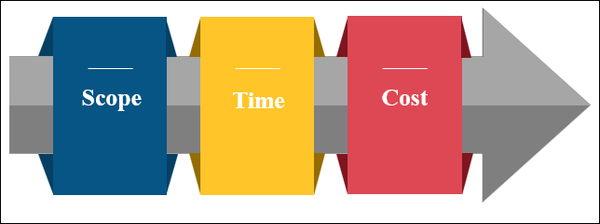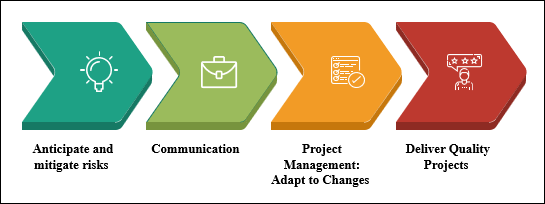Project Management Triangle
What is Project Management Triangle?
The project management triangle is a representation of the three things that are needed to successfully manage any project. It is helpful tool in planning and executing projects. We define it as the three components that need to be balanced for successful project execution: Scope, Schedule, and Cost. These three components are all critical to the success of your project. If any one component is out of balance with the others, then you can expect problems ranging from a delayed timeline to an overspent budget.

Basic Concepts of the Project Management Triangle
Project management is the process of managing a project from start to finish. And while there are many different approaches to project management, one framework that has been around for years and is still widely used today is the Project Management Triangle. The triangle consists of three parts: scope, time, and cost.
Three Elements of Project Management Triangle
1.Scope - Project Scope is the degree to which a project will produce benefits and meet customer requirements. This aspect of project management can be difficult, as it requires good communication with the client or manager, so they know what's expected from their end. It also takes time for them to provide feedback on completed work so that you have an idea of whether changes need to be made, if there are any problems with your final product due to misunderstanding, etc. The better this part goes during planning stages, the less likely you'll run into problems later down the line!
2.Time - The time constraint is an important factor to consider when planning a project. The importance of the time constraint in the project management triangle varies depending on what stage we are at with our current plan. For instance, if we have already planned and prioritized the tasks for the week ahead and need someone to execute these tasks, then it would be most important that they complete all of them within their work hours (the time spent working). However, if we were still deciding how many tasks should go into each day's schedule or which task goes first, then it would be less important.
3.Cost - The Cost Constraint is the third element in the project management triangle. The cost constraint can be defined as a limit to how much money can be spent on a project, which forces managers to make decisions about what they are going to do with their limited funds. There are various ways that this constraint can affect the quality of projects and organisations such as:
- Cost constraints may lead an organisation or manager to lower quality solutions for problems because it does not have enough funding.
- This may lead those who work within those organisations or those who manage these budgets and projects, into making decisions that put them under pressure to deliver their projects.
- If managers and organisations are under pressure to create quality products, they may have lower budgets than other competing companies who do not face the same constraints.
3 Strategies for Managing the Project Triangle
The project triangle is an important concept in project management. It can be difficult to manage but following these three strategies will help you get the job done!
1) Make sure that your resources are allocated efficiently. This means balancing tasks with people and time so that all your team members have enough work to do without being overworked.
2) Be mindful of what is most important when deciding which task to complete first. For example, if something is urgent or high priority it should take precedence over less pressing matters
3) Keep track of how much progress has been made on each task throughout the day. This way, you'll know where things stand at any given moment and adjust accordingly.

Common Applications and Uses of the Project Management Triangle
1.Anticipate and mitigate risks
The iron triangle is a theory that helps project managers anticipate and mitigate risks. The three points of the Iron Triangle are time, cost, and quality. To successfully complete a project on time and under budget with the desired level of quality, all three points must be always considered. If one point is not given its due consideration, it will influence the other two points which could result in a failed or delayed project.
2.Communication
Communication is key to any successful project. When you are working with clients, it’s important that they understand the constraints of your project so there are no surprises down the line. The iron triangle visualises three major components of a project: time, scope, and cost. This blog post will discuss how to use this tool to communicate more effectively with your clients!
3.Project Management: Adapt to Changes
Project management is all about adapting to changes. As a project manager, you must be able to adapt or pivot when faced with sudden project changes or new requirements.
4.Deliver Quality Projects



